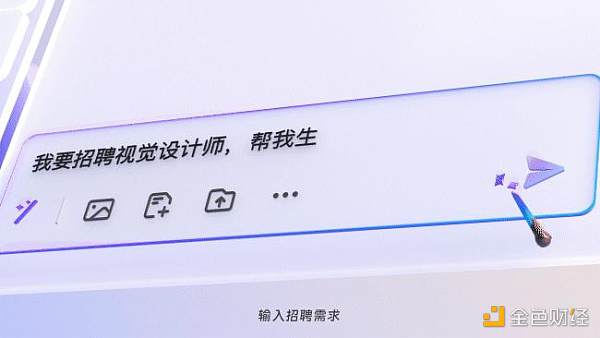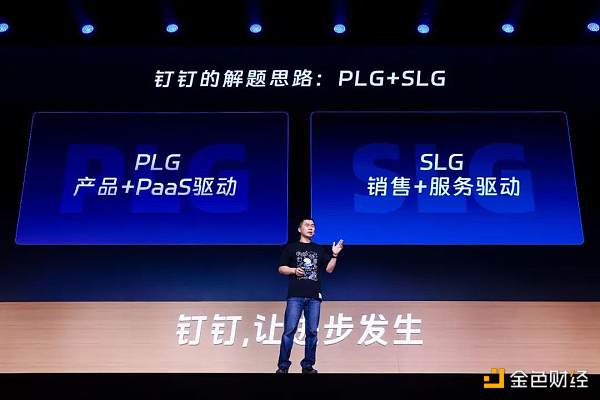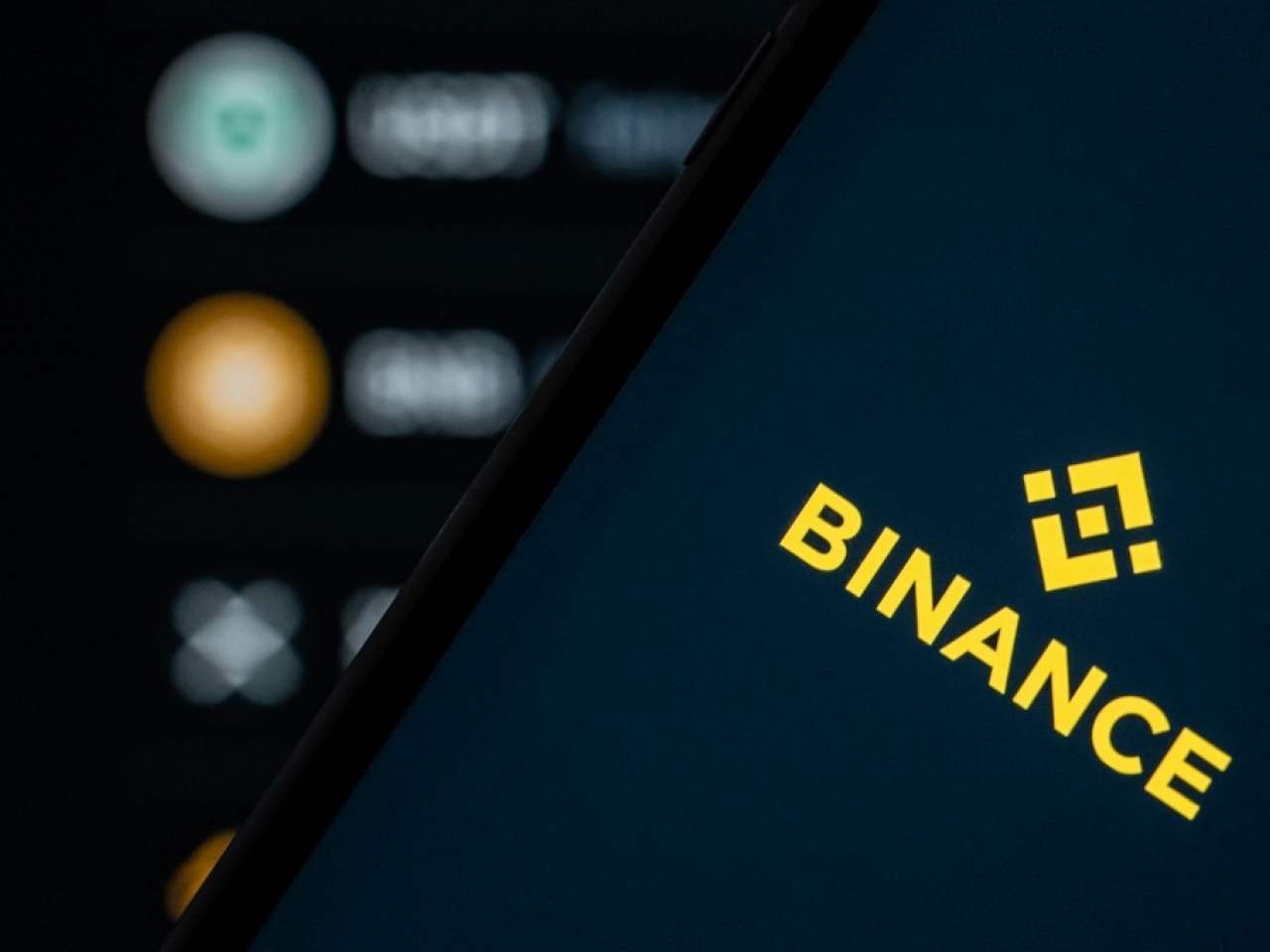Where is the future of money with AI-reconstructed DingTalk?
Future of money with AI-reconstructed DingTalk?The DingTalk Ecological Conference in 2023, after two years of absence, encountered DingTalk that had been flying solo for nine days.
“Be a small DingTalk, be a good DingTalk, be a cool DingTalk,” Wu Zhao reiterated DingTalk’s direction.
The three points mentioned by Wu Zhao, combined with “high-quality growth,” correspond to the goals set by DingTalk’s CEO Ye Jun of “exploring commercialization, developing its own ecosystem, and promoting intelligence.”
“As of the end of March 2023, DingTalk’s subscription service has exceeded 100,000 customers, with an ARR (Annual Recurring Revenue) far exceeding the valuation standard of $100 million for a unicorn company. The paid DAU (Daily Active Users) reaches 23 million, and at the same time, DingTalk’s server and bandwidth costs have been reduced to 1/4 of the peak of the epidemic.” At the meeting, DingTalk publicly announced key data on its 2B commercialization, also publicly releasing its performance report for the first time.
- Why is it difficult to generate true random numbers on the blockchain?
- What hidden information is there in the research on the development trajectory of BAYC and Milady?
- Analyzing the RUNE protocol from both bullish and bearish perspectives.
After being separated from Alibaba Cloud, DingTalk was put under the spotlight. At this time node, it once again clarified its future strategic direction and announced its commercialization achievements to the outside world. In addition to DingTalk urgently needing to prove its strength to the market, it is more important to reposition itself in the market.
After being split, DingTalk faces independent accounting, self-profit and loss, and more intense market competition. Although according to the disclosed data, DingTalk has made breakthrough progress in commercialization, it is still far from enough. The task of turning losses into profits within three years is still daunting. This is also the fundamental reason why DingTalk emphasizes “being a small DingTalk” and targeting small and medium-sized businesses.
At the same time, DingTalk also needs to enhance its future value through comprehensive intelligence. The Chinese software industry is experiencing sluggish growth, and intelligence injects new imagination space into it. Just like foreign companies such as Microsoft and Adobe, which have bet on intelligence from the beginning, DingTalk also has this plan.
But Rome wasn’t built in a day. From the intelligent products “going live” at the DingTalk press conference, DingTalk’s direction is good, but the road ahead is still long and challenging.
LianGuaiaS Intelligence: From BLianGuaias to AILianGuaiaS
Ye Jun announced at the conference that “DingTalk will open its intelligent base (AILianGuaiaS) to ecological partners and customers, and use large models to help ecological partners rebuild their products.”
Looking back on the path of DingTalk’s intelligence, it has gone through three stages:
In 2021, DingTalk proposed the low-code (ALianGuaiaS) revolution and launched the low-code application development platform “Yida,” taking the first step towards intelligence.
On March 22, 2022, DingTalk made it clear that “DingTalk only does one thing, which is LianGuaiaS.” It proposed to do BLianGuaiaS and launched “cool applications,” followed by the launch of ILianGuaiaS, DLianGuaiaS, and other bases, which is the second step of intelligence.
On August 22, 2023, DingTalk announced the opening of AI LianGuaiaS, which is the third step of LianGuaiaS transformation.
What exactly is AI LianGuaiaS, the transformation of DingTalk’s AI LianGuaiaS with three strategic goals in three years?
According to the official introduction of DingTalk, AI LianGuaiaS includes three parts: model training platform, model scheduling platform, and plugin development platform.
At the bottom, there should be AI infrastructure support. The first layer opens various general large models and plugins, and enterprises can fine-tune by calling the capabilities of large models to create the required exclusive models. The second layer is the model scheduling platform, which includes context memory, intelligent planning, template management, general capabilities, and prompt tools. With the capabilities and tools provided by the first and second layers, ecological partners and enterprises can develop various AI applications. DingTalk also provides different scenario applications and industry solutions in the third layer.
DingTalk’s products are becoming more and more substantial. From an architectural perspective, the AI LianGuaiaS created by DingTalk is similar to the MaaS platforms launched by some companies. Taking Baidu Intelligent Cloud Qianfan Large Model Platform as an example, it is also composed of AI infrastructure, basic control platform, general large model training, prompt engineering, model fine-tuning, prompt engineering, and other functions. The difference may be that some large model platforms such as Baidu have more detailed and rich training functions for large models, while DingTalk focuses more on simplifying some processes to reduce the threshold for users.
(Chart source: Baidu Intelligent Cloud Qianfan Large Model Platform Official Website)
However, they all converge on the same point: making the capabilities of large models available.
Ye Jun said, “To transform large models from ‘toys’ into productivity tools, they must enter application scenarios, but first, the reliability of model input and output must be solved. AI LianGuaiaS solves the data security and performance issues of large models, enabling large models to enter enterprise context scenarios, reducing the uncertainty of large models, reducing the threshold for development and operation, helping enterprises establish connections between data and large models, and making the capabilities of large models truly usable for work.”
(Chart source: DingTalk APP)
With AILianGuaiaS as the foundation and DingTalk Magic Suite as the entry point, DingTalk has restructured its product system. According to Light Cone Intelligence, currently, DingTalk has launched multiple applications in management, collaboration, business scenarios, etc., and has launched the first batch of 11 intelligent SaaS in the AI Mall of DingTalk APP, covering CRM, OKR, HR systems, and other scenarios.
At the same time, DingTalk demonstrated on-site the innovative products that have emerged on AI LianGuaiaS, including digital employees, AI assistants, happy puzzles, as well as a variety of intelligent scenario solutions and intelligent industry solutions.
Currently, DingTalk is exploring digital employees with several ecosystem partners, including 1st Direct Recruitment, Youcheng CRM, Yijingyun, iHR, Cool College, and Winplan. The on-site demonstration of the digital employee “Recruitment Specialist (1st Recruitment)” co-created with 1st Direct Recruitment can help HR departments write job postings, post them on relevant job websites, collect resumes, screen resumes, schedule interviews, and facilitate communication between real employees and digital employees through natural language.

In last year’s conference, Ye Jun made evaluations on ALianGuaiaS and BLianGuaiaS, stating that “‘low code’ represents a progress in the development of B2B applications, which is what ALianGuaiaS does; while ‘cool applications’ represents a progress in the usage of B2B applications, which is what BLianGuaiaS does.”
In short, ALianGuaiaS simplifies application development, while BLianGuaiaS improves application efficiency. However, unlike ALianGuaiaS, the transformation of DingTalk reshapes the entire ecosystem, breaking and reorganizing it, and intelligently infiltrating every aspect from underlying infrastructure to application products. This means that AI will become the greatest productivity.
“Winning Over Customers of All Sizes” Strategy
According to Light Cone Intelligence, in the first half of this year, DingTalk has been making multiple breakthroughs with the goal of “profitability”.
At the beginning of the year, after the launch of the new version of DingTalk, the “Dingxuan” enterprise service aggregation platform was introduced. In addition to providing services such as business expansion, financial and tax management, and office leasing, it also bundled with Tmall, putting products such as grains, snacks, household goods, home appliances, and 3C electronics on the shelves and selling them like other e-commerce platforms.
At the same time, the intelligent hardware ecosystem brand was officially upgraded to “Dingchao” with the aim of incubating more DingTalk products and providing more hardware support to ecosystem partners.
The loan service was launched on the app, responsible for driving traffic and collecting identity information for third-party loan platforms such as New Bank, Zhongyuan Consumer Finance, Instant Consumer Finance, and Baixin Bank.
In July, DingTalk started live streaming sales, with some accounts in the video section promoting products such as alcoholic beverages, cosmetics, and daily necessities.
As of the end of March 2023, DingTalk’s ARR (Annual Recurring Revenue) reached the $100 million evaluation standard. For comparison, Feishu also achieved $100 million ARR in 2022, starting from the same line, making it difficult to determine the superior one.
It is well known that the enterprise service industry has two different paths. One is to target top-tier customers, which has the advantage of accumulating industry experience from 20% of customers. However, the disadvantages are also apparent: complex demands from large customers, long project and payment cycles, and not necessarily high profit margins. The other path is to serve a larger base of small and medium-sized businesses. Although the average order value is not high, the volume is large, and the overall market space is significant.
During the process of commercialization, DingTalk has repeatedly weighed the options between targeting large customers or small and medium-sized businesses.
DingTalk’s original intention was to serve small and medium-sized businesses. Ye Jun, the founder, once stated, “At that time, we believed that serving small and medium-sized enterprises was inclusive because they lack an IT department and sufficient funds for digital development. So we created DingTalk as a platform tool to enable online office automation, communication, and digital collaboration.”
In the autumn and winter of 2018, DingTalk upgraded its slogan to “DingTalk, a digital way of working,” expanding its coverage from small and medium-sized enterprises to the market of large and medium-sized enterprises.
In the following years, DingTalk gradually established its strategic direction towards large customers. In 2020, the strategy of integrating cloud and DingTalk was implemented, and DingTalk internally proposed the large customer strategy.
In March 2022, Ku Wei, a former executive of a subsidiary of China Unicom, Vice President of Alibaba Group, and General Manager of Alibaba Cloud IoT, officially became the COO of DingTalk, responsible for the large customer strategy. Subsequently, in September, DingTalk held the Autumn 2022 Ding Summit for leading digital enterprises. During the summit, DingTalk released the annual digital trend keyword, “Digital Resilience,” and publicly explained the large customer strategy for the first time.
In November of the same year, Ye Jun announced the achievements of DingTalk’s large customer strategy at the 2022 Yunqi Conference, stating, “In the past two years, the number of organizations with more than a thousand users on DingTalk has tripled.”
At this year’s Ecological Conference, Ye Jun revealed the latest customer data, stating, “As of the end of March 2023, out of over 100,000 paying customers, small and micro enterprises account for 58%, medium-sized enterprises account for 30%, and large enterprises only account for 12%.”
From the presented data, it can be seen that although the number of large enterprises on DingTalk has also increased during the three years of implementing the large customer strategy, it is still small and medium-sized enterprises that contribute the most to DingTalk’s revenue. Therefore, “focusing on small and medium-sized enterprises” naturally becomes the preferred approach for DingTalk’s profitability.
Ye Jun revealed that DingTalk has established a dual-track commercialization path, PLG (Product-driven and LianGuaiaS-driven) + SLG (Sales-driven and Service-driven), which means providing deep value to enterprises through “platformized product power + ecological openness.” (For the sake of discussion, the following will simplify DingTalk’s two commercial paths as the “product route” and the “sales route.”)

Traditionally, the product route and the sales route have always been two “parallel lines.” The logic of the product route is to polish the product to be user-friendly enough to naturally attract a large number of users, with typical products such as Notion and Runway. On the other hand, the logic of the sales route is the opposite, prioritizing growth and commercialization over product experience.
DingTalk combines product roadmap with sales roadmap. First, it is necessary to coordinate the landing of different types of businesses. For example, the relatively lightweight personal version of DingTalk is suitable for user-oriented models driven by products. Products that are relatively heavy and have a longer service cycle, such as the enterprise version of DingTalk, are more suitable for delivery with sales-driven approaches.
Secondly, the sales strategy and team within Alibaba Cloud are no longer suitable for the iterated DingTalk. DingTalk has independently developed its own sales and service roadmap, aiming to serve customers in the intelligent era. By facing frontline customers and gaining industry experience from actual combat, DingTalk can not only navigate the path of intelligent commerce but also build stronger barriers.
Where is the “money” road for intelligence?
According to Guancong Intelligence, DingTalk currently has three main commercial model paths. First is the pure software subscription fee model, with the core product being the “Three Special Bases”. It charges an annual fee for the professional version, exclusive version, and proprietary version, on top of the free standard version. Secondly, there is platform commission and hardware authorization. DingTalk charges commissions for SaaS products sold by partners and charges partners who develop hardware products based on the DingTalk platform in the form of licenses. Thirdly, there are suite products, including the Magic Wand Suite, Office Suite, Management Suite, and LianGuaiaS Suite.
This time, DingTalk has provided a clear plan for the charging of large-scale landing applications that have attracted attention. The annual fee for DingTalk Professional Edition + AI has been increased to 19,800 yuan/year, an increase of 10,000 yuan compared to before, and it can obtain 200,000 calls to the large-scale model. The annual fee for Exclusive Edition + AI is 118,000 yuan, an increase of 20,000 yuan compared to before, and it can obtain 450,000 calls to the large-scale model, which is equivalent to an average cost of less than 5 cents per call.

What are the characteristics of DingTalk’s ways of making money through intelligent products? Comparing with domestic and foreign companies may provide a more intuitive understanding. However, due to the complexity of DingTalk’s product line, it can be broadly divided into two categories:
Firstly, enterprise version products. Unlike the “packaged” charging model provided by DingTalk, OpenAI is more pay-as-you-go.
For enterprises, OpenAI mainly provides API services for external companies, integrating ChatGPT and Whisper models. The current charging standard is to provide 1,000 tokens at a price of $0.002 per token, and users can call them as needed and pay based on usage. At the same time, in April of this year, OpenAI expressed its plans to launch an enterprise version in the next few months, and the future charging model may be more flexible.
Secondly, let’s take a look at the lightweight product “Personal Edition DingTalk” recently launched by DingTalk. This product is currently in beta testing, but it already has AI capabilities. Some netizens jokingly refer to the personal version of DingTalk as Notion+ChatGPT+Midjourney+Zoom. The personal version of DingTalk will likely adopt a charging model in the future, with reference to NotionAI’s charging standard of $10 per month. The personal version of DingTalk has more abundant features, so its charges may be higher.
DingTalk’s competitors have not stopped their commercialization efforts. Before the comprehensive implementation of intelligence, Feishu and Tencent Docs have first canceled their free policies.
In February of this year, Feishu announced new charging standards, using limited user functionality to drive payment. If you don’t purchase value-added services, the storage space for Feishu Docs will decrease from 50G to 10G, the storage space for Miaoji will decrease to 2G, and the Gantt chart function in multidimensional tables will no longer be free to use. The storage of chat records will change from permanent free to only 180 days.
Tencent Meeting has canceled the free unlimited time meetings for personal users with 300 participants, which caused a surge in hot searches. The membership price for personal users has been adjusted from the previous 30 yuan/month to a starting price of 98 yuan/month.
The era of free collaboration in the office industry is coming to an end, and commercialization has become a sword hanging over every company’s head. Fortunately, in the era of intelligence, software is easier to monetize, which will give these companies greater profit growth potential.
Overall, the current development of intelligence is still in its early stages for all companies. How to retain users and attract them to continue paying for AI functions and effects may be the next stage of competitive focus.
We will continue to update Blocking; if you have any questions or suggestions, please contact us!
Was this article helpful?
93 out of 132 found this helpful
Related articles
- County Youth Engaged in Cryptocurrency Trading Lost 130,000 Yuan and Returned to the Construction Site to Repay Debts Again
- LianGuai Encyclopedia | What is a known plaintext attack
- An Exploration of Everything Behind Friend.Tech
- Base and Optimism launch shared governance and revenue sharing framework
- An In-depth Analysis of Aave Governance V2 A More Inclusive and Efficient Decision-making System
- Coinbase is in talks with Canadian banking giant to promote cryptocurrencies
- LianGuai Morning News | ARK Invest and 21Shares Submit Ethereum ETF Application





